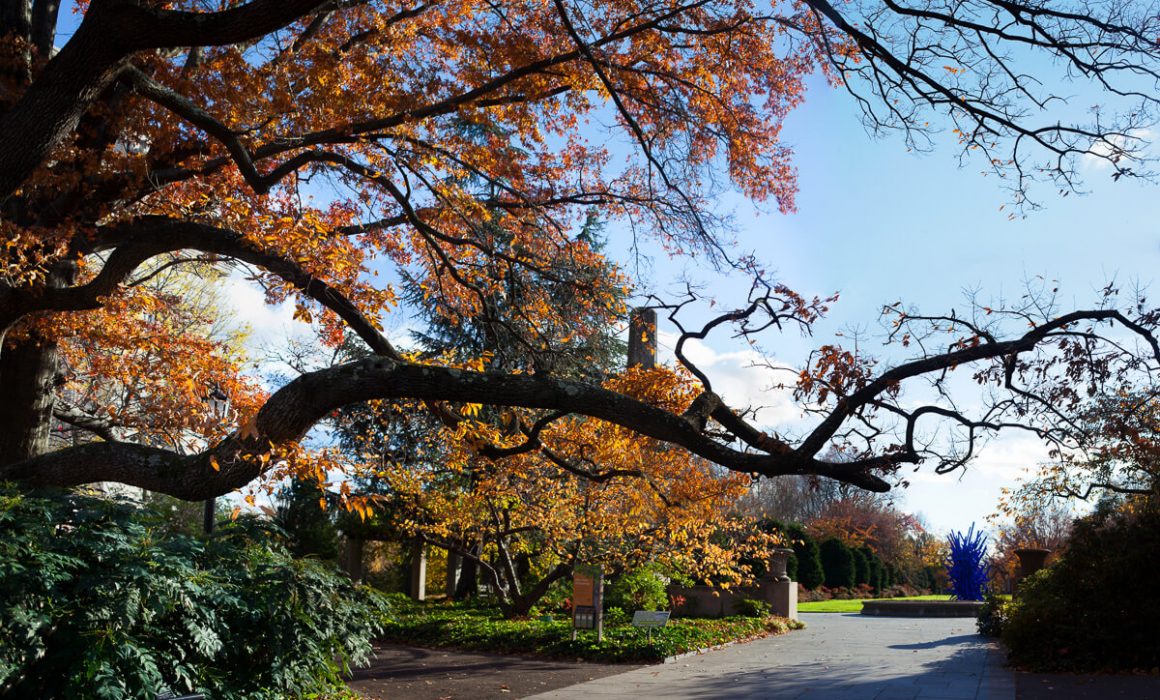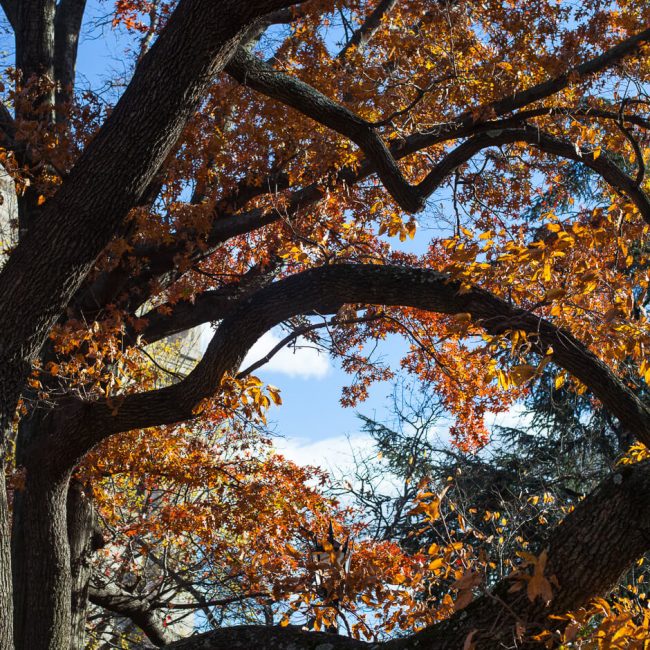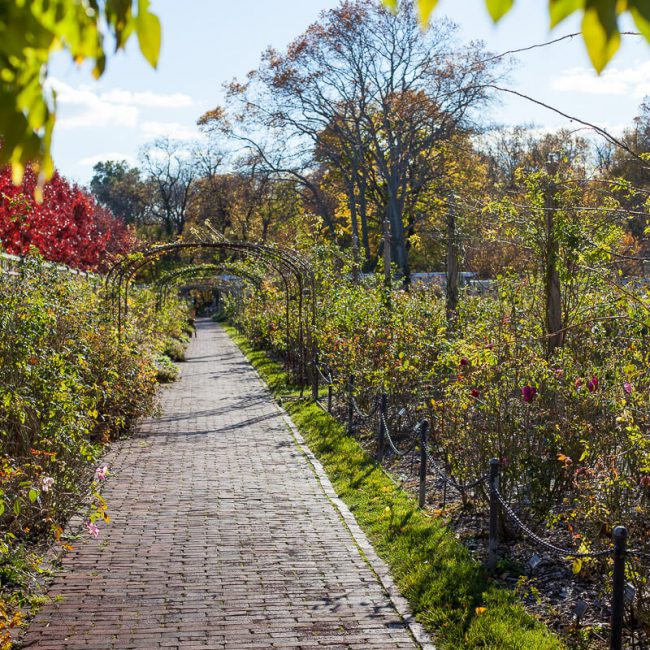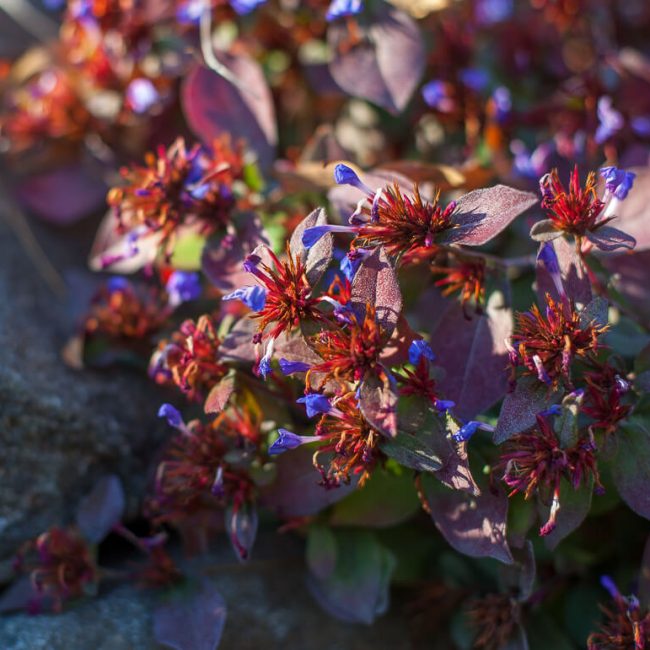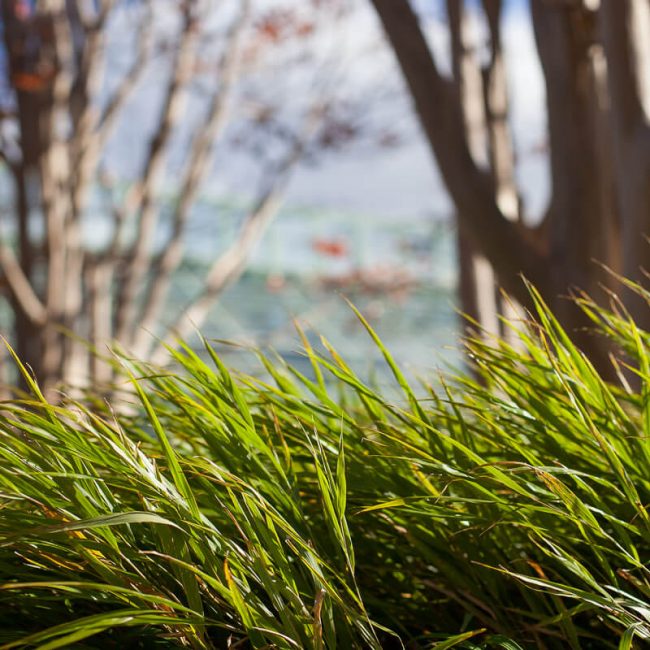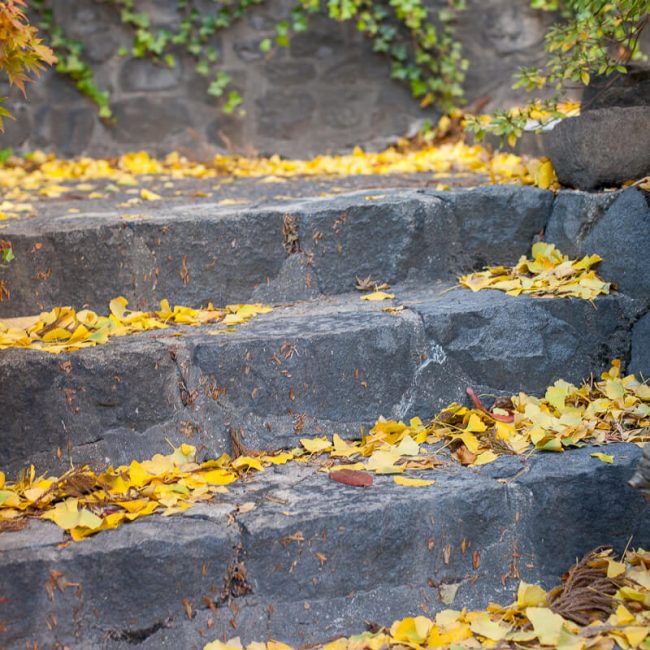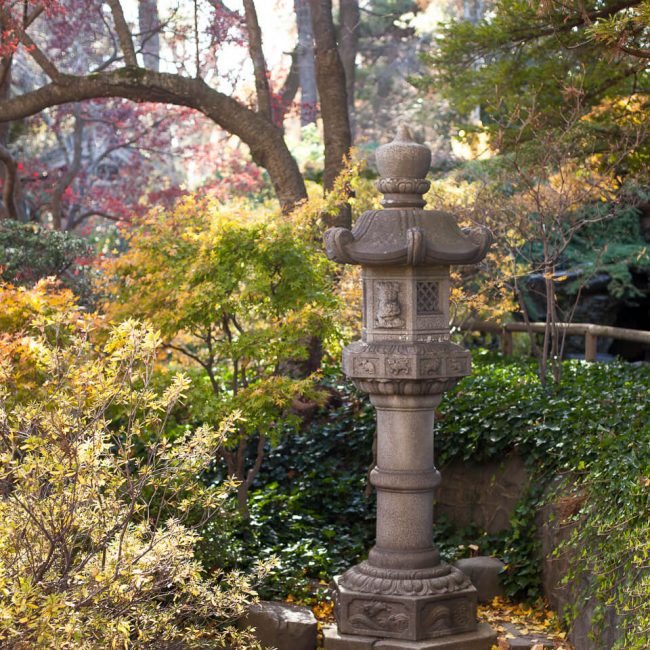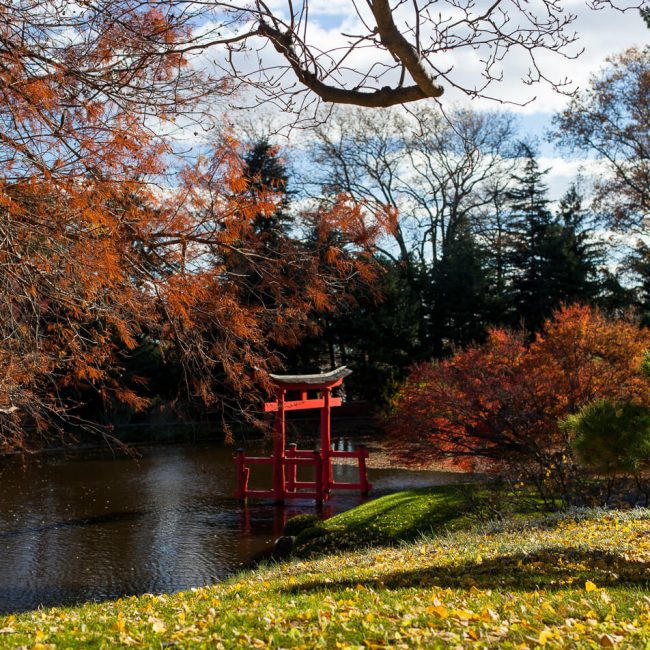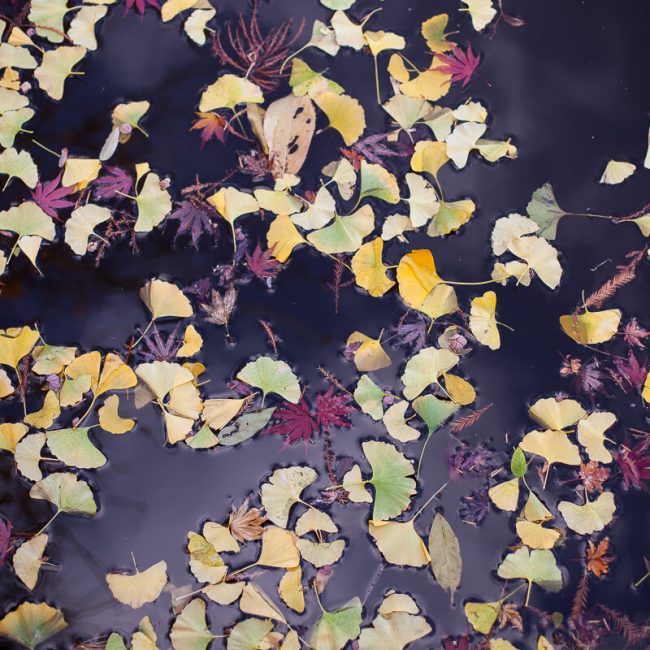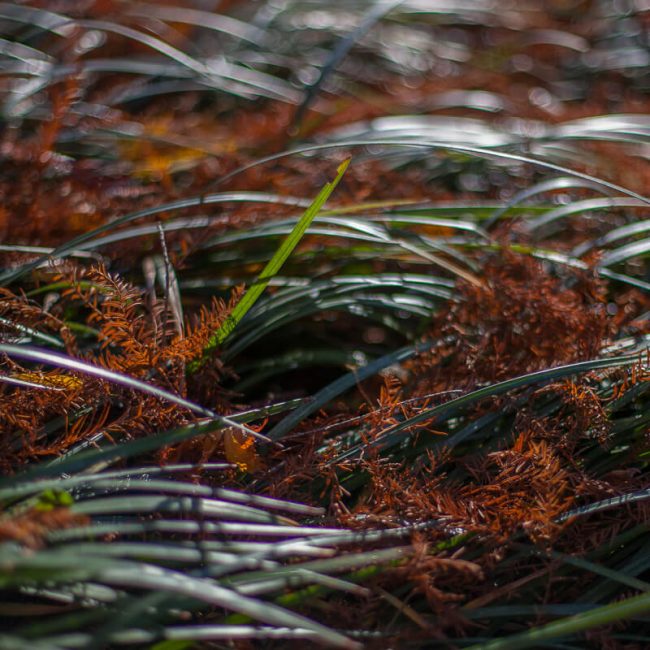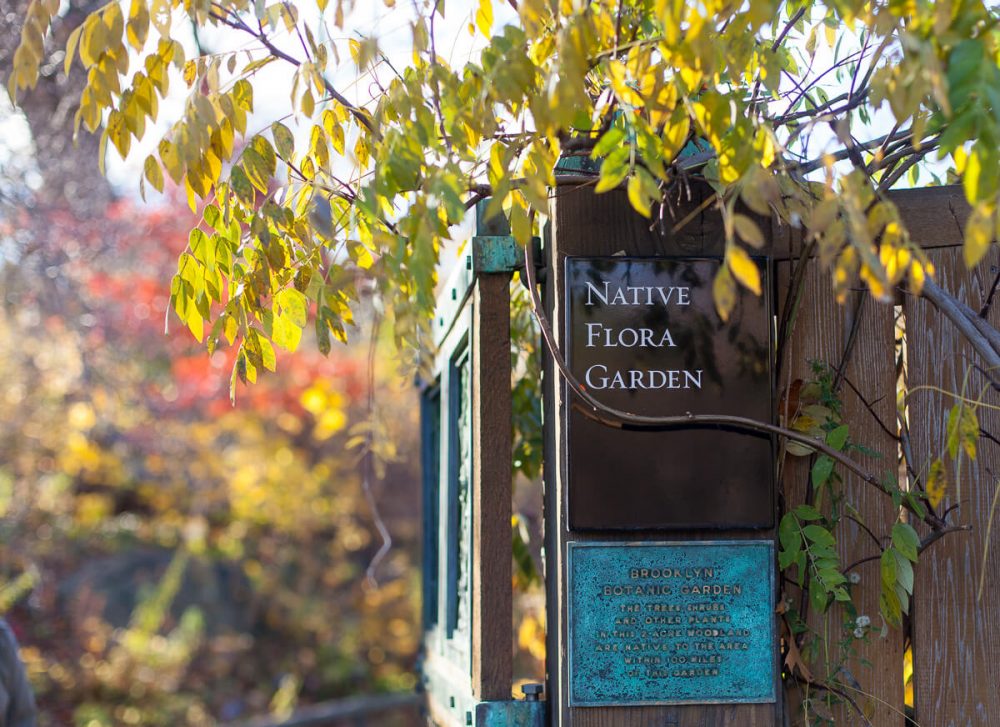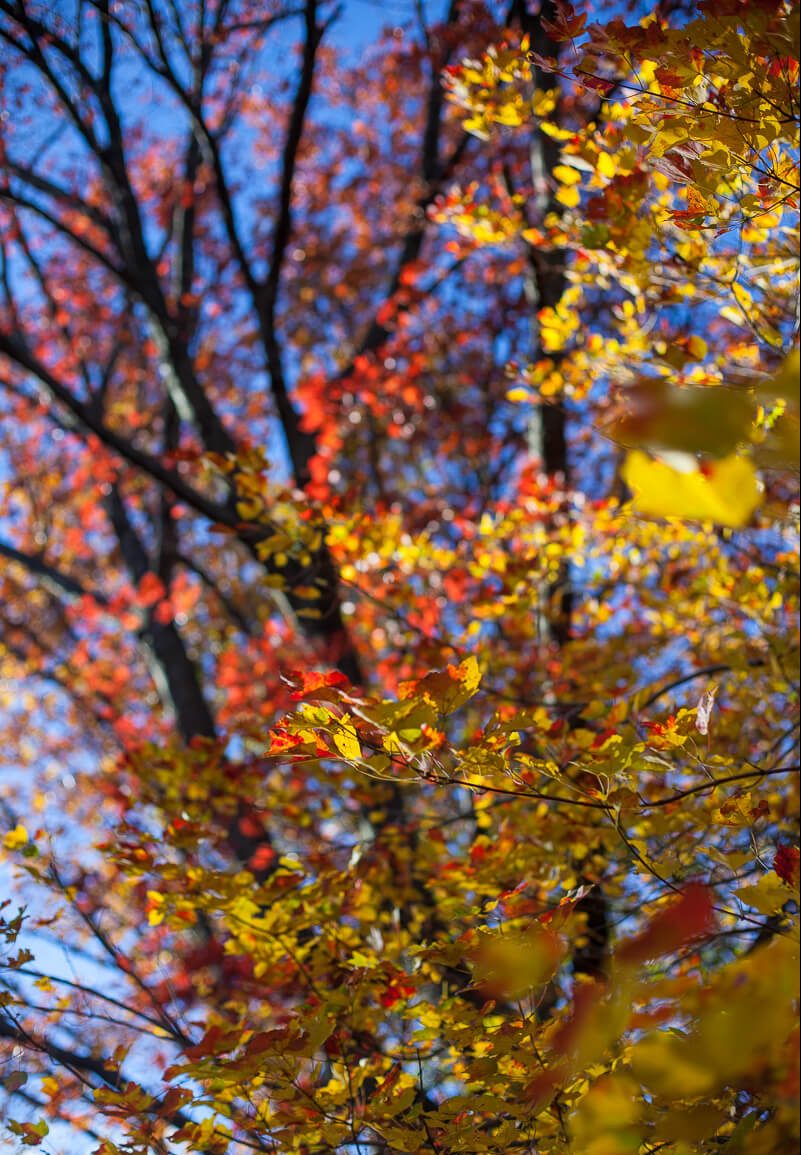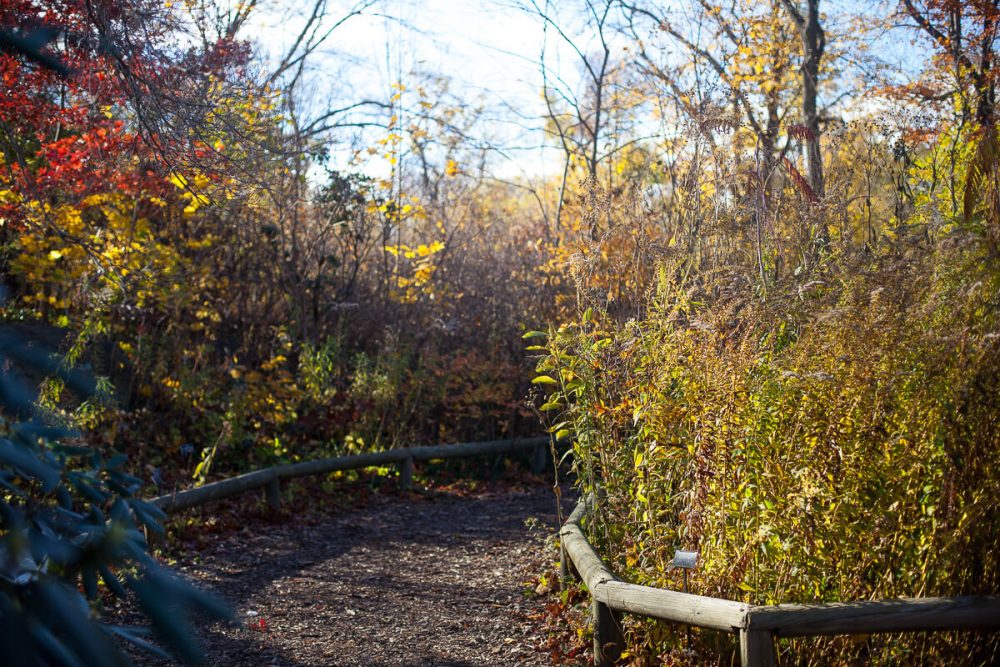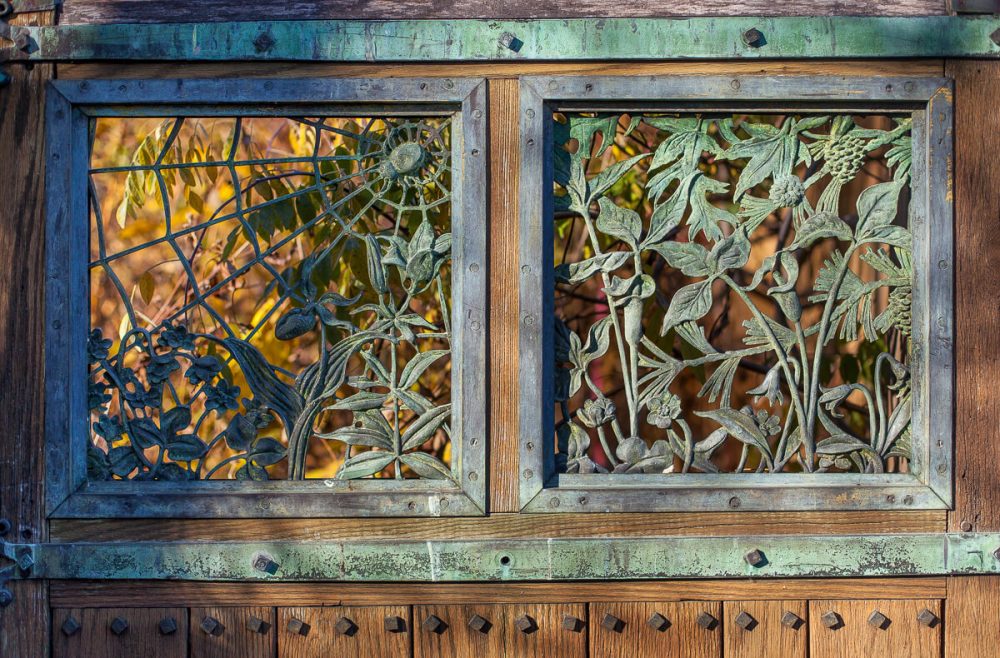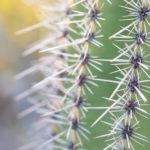It’s Not Too Late to See Fall Foliage at the Brooklyn Botanic Garden
By now, autumn’s transformative powers have worked their magic on New York City. Golden leaves blanket city sidewalks, ethereal seedheads have replaced flowers, and there’s a crisp chill in the air. If nature is calling to you and you yearn for a little more time outdoors before winter hits, head to the Brooklyn Botanic Garden. I can’t think of a better way to spend an afternoon than strolling through the park and soaking in the last days of autumn.

Two limestone columns mark the entrance to the fountain plaza within the Osborne Garden.
Form and Structure Comes Alive in the Fall
In the spring and summer, flowers steal the show. It’s hard not to ooh and ahh over them. Everywhere you look, it’s a riot of color with flower beds and baskets bursting with blooms. Trees often go unnoticed during the growing season. Their subtle shades of green blend together to form a backdrop for the flowers. Of course, we notice their structure and their influence on design, but it’s often relegated to our subconscious. That all changes in autumn. Few things are as captivating as the flaming colors of fall foliage.
The diversity of the plant collection at the Brooklyn Botanic Garden provides ample opportunities to observe the changing seasons. Even after the fall foliage peak, there is beauty to be found for many weeks. Last year, I visited on Thanksgiving weekend and the colors and textures were still impressive. The 100-year old garden is home to many outstanding tree specimens and even formal allées. I spent hours meandering beneath the mature tree canopies; my feet shuffling through fallen leaves.
Cherry (Prunus ‘Kanzan’) allées border the eastern and western edges of the Cherry Esplanade. The double-flowering cherries are a must-see in the spring. In the fall, the white and pink canopy turns to gold. As the leaves fall, long yellow stripes color the lawn below. The Cherry Esplanade lawn is the only grass you can sit on at the Brooklyn Botanic Garden. It’s a perfect spot to lean back and watch the light stream through the layers of leaves. Majestic allées of scarlet oak trees (Quercus coccinea) flank the cherries and mark the outer edge of the lawn. In late November, the trees still tightly grasp their rusty red leaves.
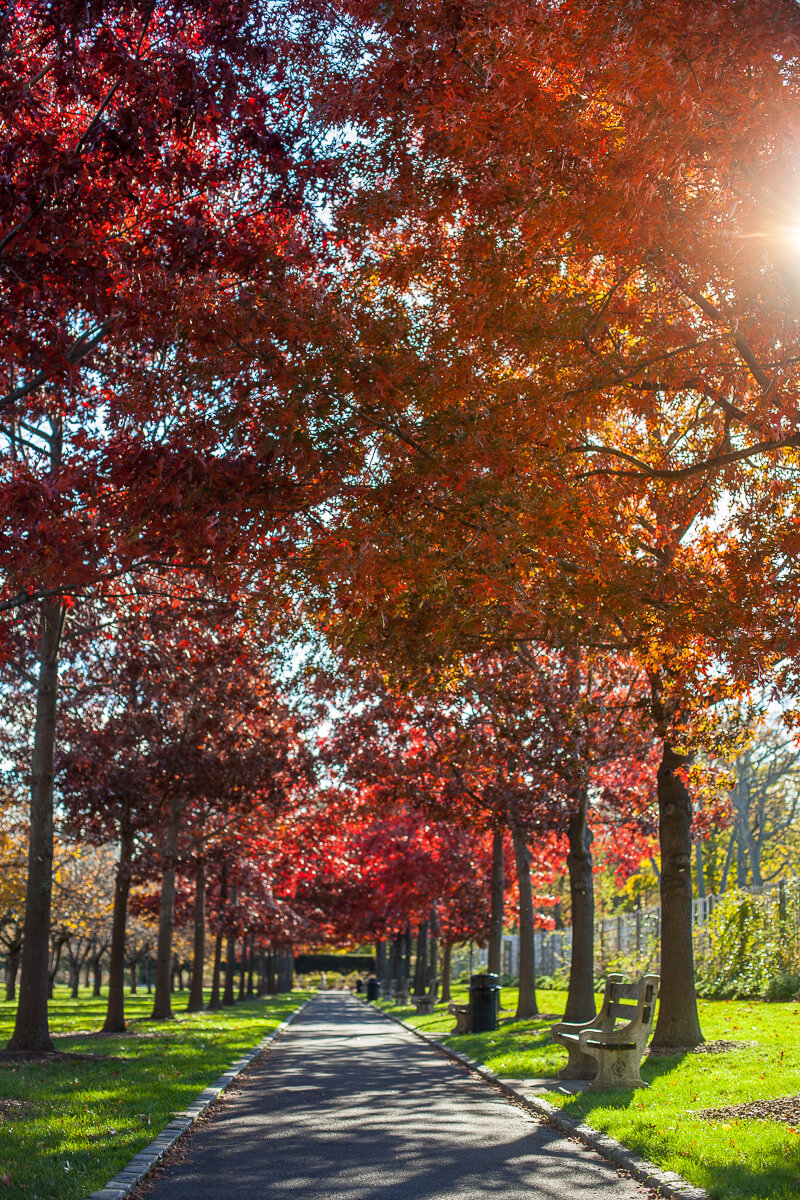
The scarlet oak (Quercus coccinea) allée was planted in remembrance of the events of September 11, 2001.
The trees in the Magnolia Plaza provide interest year-round. In the spring, clouds of magnolia blossoms tower above the elegant stone plaza. When the showy flowers are gone, it’s easier to observe the structural beauty of the magnolia trees.
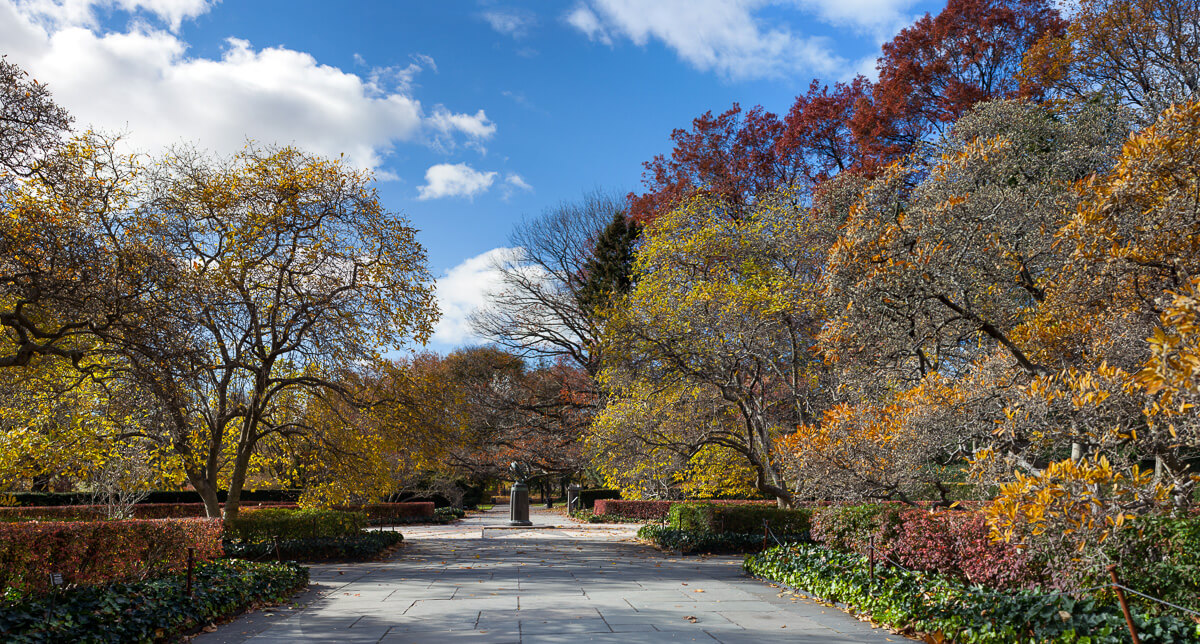
But it’s not all about the fall foliage. As the leaves begin to drop, the structure and form of a tree become clear. You’re free to admire graceful arching branches or those gnarled and twisted with aged. Broad trunks stretch to the heavens; their bare branches stark against a brilliant autumn sky.

Cherry trees line the path from the Japanese Hill-and-Pond Garden to the Cherry Esplanade. In the fall, their bare branches cast intricate shadows across the path.
Japanese Hill-and-Pond Garden
In the Japanese Hill-and-Pond Garden, the maples and ginkgos don their fall finery. Green is replaced with vibrant red, purple, and burgundy and glowing yellow and gold. They’re the highlight of the garden and reason alone to visit in the fall. The flame-colored trees are brilliantly juxtaposed against the dark sculptural evergreens.
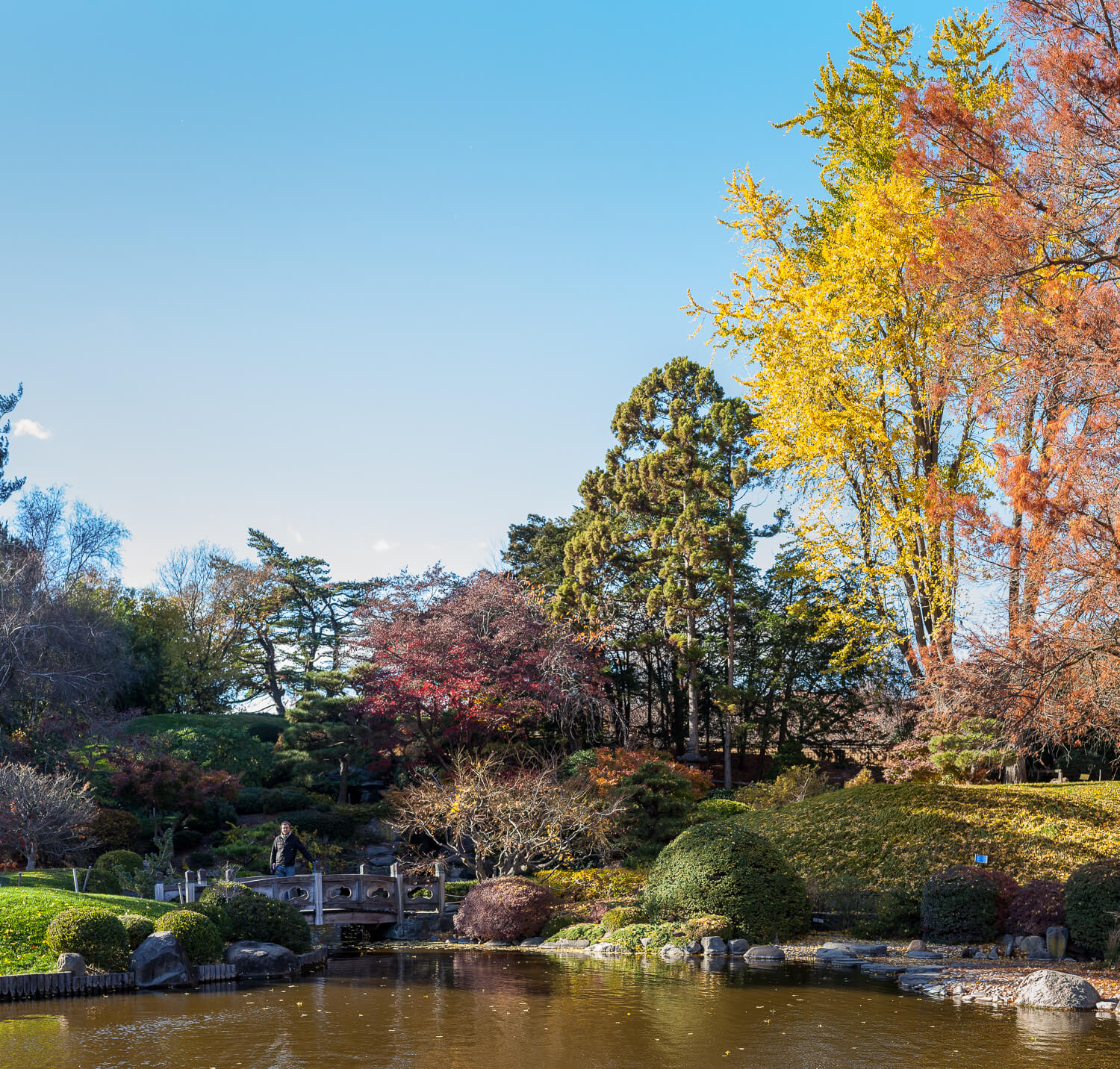
The view from the wooden pavilion; the yellow gingko still shines brightly in late autumn.
A path meanders around the pond and offers several vantage points to enjoy this unique landscape. This is one of the oldest public Japanese gardens in America, dating to 1915. Near the center of the pond is a brilliant red torii that perfectly complements the fall foliage. After squatting and kneeling while taking photos for hours, the wooden pavilion was the perfect spot for a rest. From a quiet bench, I took in views of the pond and watched the low sun filter through the colorful trees.

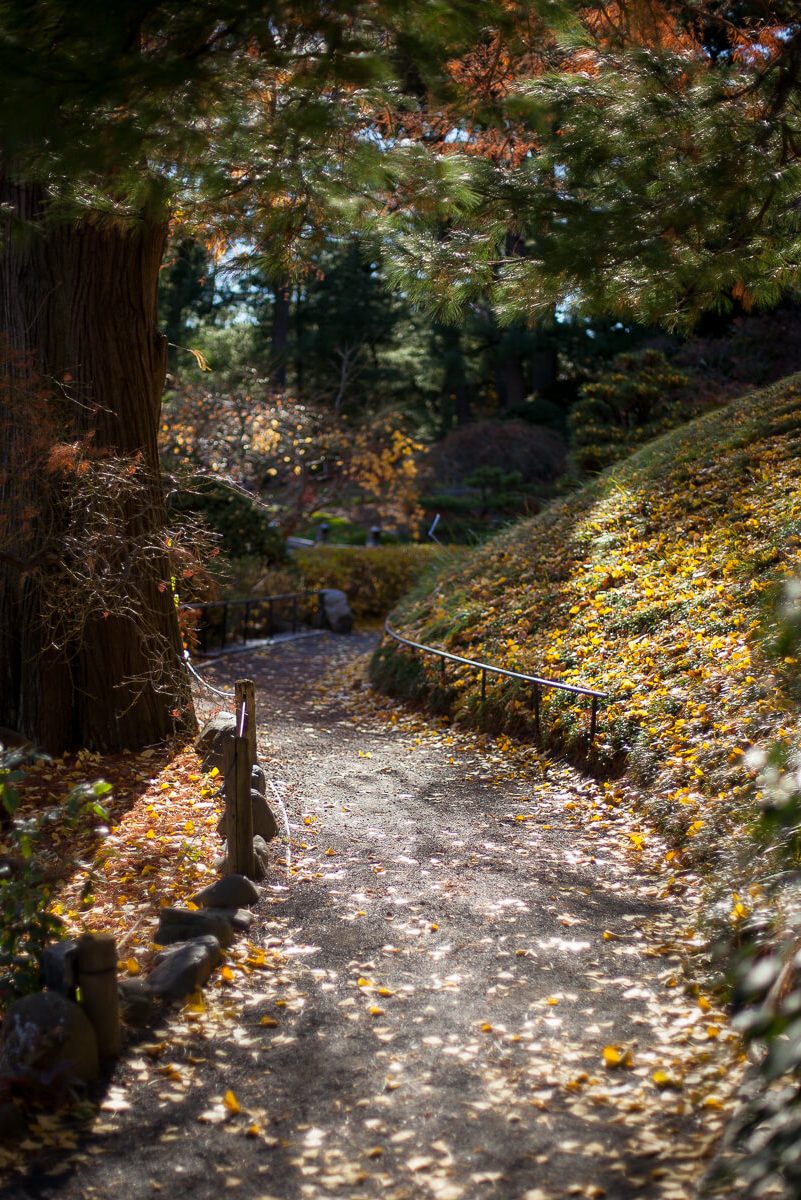
On the bank of the pond, a regal bald cypress (Taxodium distichum) grows. It’s one of the few conifer trees that actually sheds its needles annually. Before they drop, the delicate needles turn a warm rust color. Layers of fallen ginkgo leaves and bald cypress needles create a soft tapestry that blankets the path in the Japanese garden.
Other structures are hidden throughout the garden. As you stroll, you’ll discover stone lanterns and wooden bridges. From the footbridge, watch the koi fish swim beneath fallen leaves that decorate the dark surface of the pond.
Native Flora Garden
Discover plants and habitats native to Manhattan in the Native Flora Garden. It’s hard to imagine New York City’s diverse ecological history. But before the skyscrapers and roads, forests, wetlands, and meadows were abundant on Manhattan island. Experts estimate that at one time, the island was home to 55 different ecological community types.
First created in 1911, the Native Flora Garden has evolved over the years. At first a wildflower garden, it’s grown into a mature woodland. Some of the oldest trees in the Brooklyn Botanic Garden can be found here. Recent expansions, including a coastal plain meadow, pine barrens, and a pond, have increased the diversity of ecological communities found in the garden. Walking through the forest, you feel far removed from the busy city streets as the hum of traffic and people fade away.
Visiting gardens in the fall and winter provides a different kind of beauty. The lack of flowers highlights the architectural elements of a garden. Trees come into the spotlight with their brilliant colors and striking forms.
In the weeks leading up to winter, nature slows down. The earth feels a little quieter as it prepares for its winter rest. Before the winter doldrums set in, relish the time you can spend outdoors and get out to one of New York City’s best gardens.

